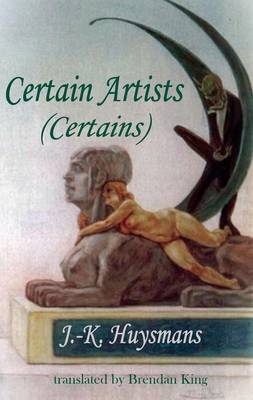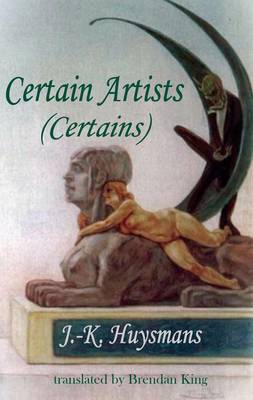
- Afhalen na 1 uur in een winkel met voorraad
- Gratis thuislevering in België vanaf € 30
- Ruim aanbod met 7 miljoen producten
- Afhalen na 1 uur in een winkel met voorraad
- Gratis thuislevering in België vanaf € 30
- Ruim aanbod met 7 miljoen producten
Zoeken
€ 19,45
+ 38 punten
Omschrijving
Certain Artists makes for compelling reading. Huysmans' idiosyncratic assessments throw light on his aesthetic preoccupations, past and present, and hint at the spiritual journey he was about to undertake. It includes over 140 black and white illustrations, as well as an introduction, setting the book in the context of its time, comprehensive notes, and a glossary of the artists mentioned.
First published in 1889, but never before translated into English, this second collection of J.-K. Huysmans' art criticism serves as a companion to the author's iconoclastic Modern Art (L'Art moderne) of 1883. Unlike the earlier volume, Huysmans wastes little time lambasting the art of the establishment, the Academic painters whose work had lined the annual Salon for years. Instead, he concentrates on a series of his own artistic enthusiasms, which he explores with his trademark spleen and invective. There are extended analyses of Edgar Degas's controversial portraits of women at their toilette; of Odilon Redon's monstrous and disturbing engravings, of Gustave Moreau's heiratic paintings that had such a powerful influence on Against Nature; and of Felicien Rops, whose Satanic engravings, particularly his images of women as agents of the devil, would haunt Huysmans' subsequent novel, Là-bas, of 1891.
First published in 1889, but never before translated into English, this second collection of J.-K. Huysmans' art criticism serves as a companion to the author's iconoclastic Modern Art (L'Art moderne) of 1883. Unlike the earlier volume, Huysmans wastes little time lambasting the art of the establishment, the Academic painters whose work had lined the annual Salon for years. Instead, he concentrates on a series of his own artistic enthusiasms, which he explores with his trademark spleen and invective. There are extended analyses of Edgar Degas's controversial portraits of women at their toilette; of Odilon Redon's monstrous and disturbing engravings, of Gustave Moreau's heiratic paintings that had such a powerful influence on Against Nature; and of Felicien Rops, whose Satanic engravings, particularly his images of women as agents of the devil, would haunt Huysmans' subsequent novel, Là-bas, of 1891.
Specificaties
Betrokkenen
- Auteur(s):
- Vertaler(s):
- Uitgeverij:
Inhoud
- Aantal bladzijden:
- 256
- Taal:
- Engels
- Reeks:
Eigenschappen
- Productcode (EAN):
- 9781912868612
- Verschijningsdatum:
- 1/08/2021
- Uitvoering:
- Paperback
- Formaat:
- Trade paperback (VS)
- Afmetingen:
- 124 mm x 196 mm
- Gewicht:
- 217 g

Alleen bij Standaard Boekhandel
+ 38 punten op je klantenkaart van Standaard Boekhandel
Beoordelingen
We publiceren alleen reviews die voldoen aan de voorwaarden voor reviews. Bekijk onze voorwaarden voor reviews.








